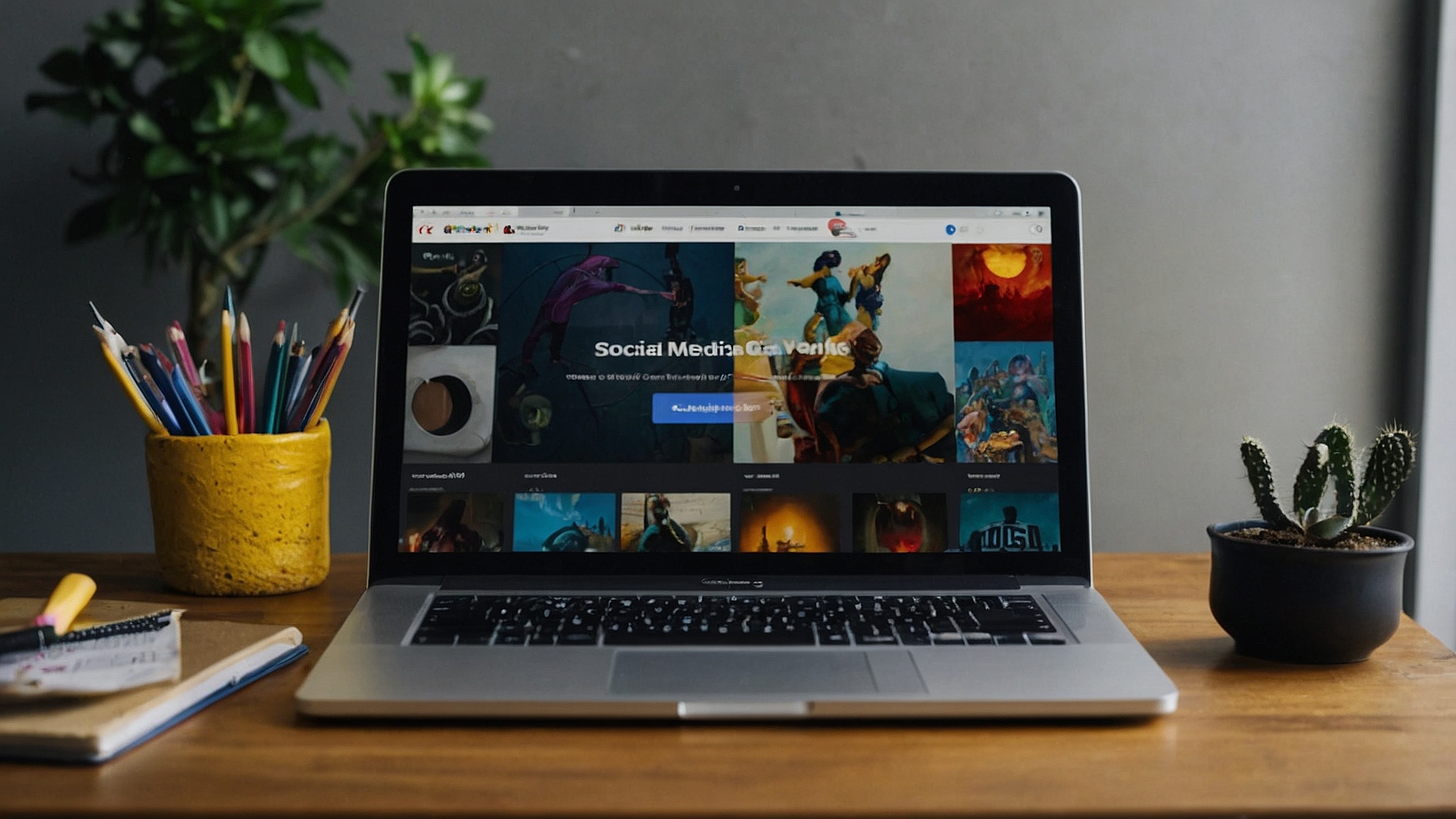The 5 Social Media Platforms Every Business Needs to Succeed in the Digital Age
In this Digital Age, having a strong presence on social media is crucial for the success of any business. With over 4 billion active users across various platforms, businesses have the opportunity to reach a vast audience and engage with their customers in a more personal way.
However, with so many social media platforms available, it can be overwhelming to decide where to focus your efforts. To help navigate this digital landscape, here are the 5 crucial social media platforms that every business should consider using to thrive in the online world.
Key Takeaways:
- Diverse Platforms: Utilize a mix of the 5 crucial social media platforms for maximum reach and engagement.
- Facebook: Essential for businesses of all sizes to connect with customers and build a community.
- Instagram: Ideal for visually-driven content and engaging with younger demographics.
- Twitter: Great for real-time updates, customer service, and engaging in conversations.
- LinkedIn: Key for B2B networking, building professional relationships, and sharing industry insights.
- YouTube: Perfect for video content, tutorials, product demos, and engaging with audiences through storytelling.
Before we go any further, let’s address the elephant in the room: Do you need to be on ALL of these social media platforms?
Short answer: NO.
While it may seem like a good idea to have a presence on every social media platform out there, it’s important to evaluate which ones are most beneficial for reaching your target audience.
Instead of spreading yourself thin trying to maintain accounts on all platforms, focus on the ones where your audience is most active and engaged. In other words, you want to be where your ideal customers hang out.
Quality over quantity is key when it comes to social media presence, so choose wisely and invest your time and efforts where they will have the most impact.
Facebook: The Social Media Giant
Creating a Business Page That Stands Out
One of the first steps to establishing your business on Facebook is creating a standout business page. This is where your potential customers will learn more about your brand, products, and services.
Make sure to use high-quality images and concise, engaging copy to capture the attention of users scrolling through their feeds. Remember to add details such as contact information, business hours, and a brief description of what your business offers.
I think a simple rule of business is, if you do the things that are easier first, then you can actually make a lot of progress.
Facebook founder Mark Zuckerberg, as quoted on Inc Magazine
Engaging with Your Audience through Content and Interaction
Page engagement is key to building a loyal customer base on Facebook. Regularly post fresh, valuable content that resonates with your target audience. This could include informative articles, product updates, behind-the-scenes glimpses, or user-generated content. Encourage interaction by posing questions, hosting polls, and responding to comments promptly. Building a community around your brand through authentic, meaningful interactions can foster trust and loyalty among your followers.
Facebook’s platform offers various tools to help you gauge and improve audience engagement, such as insights on post performance and demographic data. Analyzing these metrics can guide your content strategy and help you tailor your engagement efforts to better suit your audience’s preferences.
Instagram: The Visual Powerhouse
Clearly, Instagram has become a dominant force in the social media landscape. With over a billion active users, it’s a platform no business can afford to overlook. Instagram’s visually-driven format makes it the perfect place to showcase your products or services in an engaging way.
Leveraging Instagram Stories and Reels for Business
Stories and Reels are powerful tools that allow businesses to connect with their audience in a more authentic and immediate way. Stories provide a behind-the-scenes look at your business, while Reels offer a fun and creative way to showcase your products or services. By utilizing these features, businesses can increase engagement and stay relevant in their followers’ feeds.
Building Your Brand Aesthetic and Community
To build a strong brand aesthetic on Instagram, it’s important to maintain a cohesive look and feel in your posts. Consistent use of colors, filters, and fonts can help create a visually appealing feed that attracts followers. Additionally, engaging with your audience through comments and messages helps foster a sense of community around your brand.
Plus, collaborating with influencers or other businesses can help expand your reach and connect with new audiences. Creating meaningful partnerships can lead to increased brand visibility and credibility in the eyes of potential customers.
Twitter: The Pulse of Real-Time Communication
Many businesses today leverage the power of Twitter to engage with their audience in real-time. This platform allows for quick updates, instant interactions, and the opportunity to share news and promotions efficiently. With its character limit, businesses have to be concise and engaging in their tweets to capture the audience’s attention effectively.
Mastering the Art of the Tweet for Business Impact
Impact: Crafting tweets that resonate with your target audience is an important skill for businesses on Twitter. Whether it’s sharing valuable insights, promoting products/services, or participating in trending conversations, businesses need to create compelling content that drives engagement and ultimately, leads to business growth. By understanding the art of crafting impactful tweets, businesses can enhance their online presence and connect with their customers on a deeper level.
Utilizing Hashtags and Twitter Chats for Networking
Twitter: Hashtags and Twitter chats are powerful tools that businesses can utilize to expand their reach and connect with like-minded individuals within their industry. By using relevant hashtags, businesses can increase the visibility of their tweets and reach a broader audience interested in particular topics or trends. Engaging in Twitter chats allows businesses to participate in real-time conversations, share their expertise, and build valuable relationships with potential customers and industry influencers.
By leveraging hashtags and participating in Twitter chats, businesses can tap into a wealth of networking opportunities that can lead to increased brand awareness, new collaborations, and valuable insights into industry trends. It’s important for businesses to actively engage in these conversations to establish themselves as industry leaders and foster meaningful connections with their audience.
LinkedIn: The Professional Network
Not just another social media platform, LinkedIn has become the go-to destination for professionals looking to connect, network, and advance in their careers. With over 700 million users worldwide, LinkedIn is a powerful tool for businesses to reach a highly targeted audience of professionals across various industries.
Positioning Your Business for B2B Success
Your business can leverage LinkedIn to position itself for Business-to-Business (B2B) success by showcasing your expertise, products, and services to other businesses. By creating a compelling company page, sharing valuable content, and engaging with potential partners and clients, you can establish your brand as a trusted leader in your industry.
Networking and Building Influence in Your Industry
Businesses can use LinkedIn to network with industry leaders, join relevant groups, and participate in discussions to build influence and establish credibility. By sharing insights, contributing to conversations, and connecting with thought leaders, you can strengthen your brand presence and attract new opportunities for growth. Another benefit of networking on LinkedIn is the ability to stay updated on industry trends and developments, making it easier to adapt and innovate in a fast-paced business environment.
YouTube: The Video Content King
After establishing a presence on social media platforms like Facebook, Instagram, and Twitter, businesses should not overlook the power of YouTube in their digital marketing strategy. With over 2 billion logged-in monthly users, YouTube presents a valuable opportunity to engage with a vast audience through video content.
Developing a Content Strategy for Video Marketing
Any successful YouTube channel starts with a well-thought-out content strategy. Understanding your target audience and their preferences is crucial in creating videos that resonate with viewers. Whether you opt for educational, entertaining, or a mix of both types of content, consistency in messaging and branding will help build a loyal subscriber base.
Growing Your Channel with Consistent Quality Content
Your YouTube channel’s growth relies heavily on consistently delivering high-quality content. This means uploading videos regularly and maintaining a certain standard of production value. By engaging with your audience, responding to comments, and analyzing the performance of your videos through metrics like watch time and audience retention, you can continuously improve and attract more viewers to your channel.
It’s important to remember that YouTube rewards channels that keep viewers coming back for more. By focusing on producing valuable, relevant, and entertaining content, you can increase your chances of success on the platform.
Integrating Social Media with Your Overall Business Strategy
Despite the widespread use of social media platforms by businesses today, many still struggle to integrate their social media efforts with their overall business strategy. It’s crucial for companies to align their social media goals with their broader business objectives to maximize the impact of their online presence.
Creating a Cohesive Online Presence Across Platforms
For businesses to succeed in the digital age, it’s vital to create a cohesive online presence across all social media platforms. Consistency in branding, messaging, and content is key to establishing a strong and recognizable brand identity. By maintaining a unified voice and visual style across platforms, businesses can strengthen brand loyalty and engagement with their audience.
Measuring Success with Analytics and Adjusting Tactics
The use of analytics is vital for measuring the success of your social media efforts and adjusting tactics accordingly. By tracking key performance indicators such as engagement rates, click-through rates, and conversion rates, businesses can gain valuable insights into the effectiveness of their social media campaigns. Identifying which tactics are working well and which need improvement allows businesses to optimize their strategies for better results.
Tactics such as A/B testing, monitoring follower growth, and analyzing demographic data can help businesses tailor their content and strategies to better meet the needs and preferences of their target audience. Regularly reviewing and adjusting tactics based on analytics ensures that businesses stay relevant and competitive in the ever-evolving landscape of social media.
To wrap up
Hence, in the fast-paced digital age we live in, having a strong presence on social media is crucial for the success of any business. By utilizing these 5 social media platforms – Facebook, Instagram, Twitter, LinkedIn, and YouTube – businesses can reach a wider audience, engage with customers, drive traffic to their websites, and ultimately increase sales and revenue.
With the right strategies and consistent effort put into creating and sharing valuable content, businesses can leverage the power of social media to build a strong brand, establish credibility, and foster relationships with their audience. These platforms offer unique opportunities for businesses of all sizes to connect with customers in a more personal and authentic way, helping them thrive in the competitive digital landscape.
FAQ
Q: What are the 5 social media platforms every business needs to succeed in the digital age?
A: The 5 social media platforms every business needs are Facebook, Instagram, Twitter, LinkedIn, and YouTube.
Q: Why is Facebook important for businesses in the digital age?
A: Facebook has a large user base, making it a great platform for businesses to reach a wider audience, engage with customers, and run targeted ads.
Q: How can businesses benefit from using Instagram?
A: Instagram is a visual platform that allows businesses to showcase their products or services creatively, connect with their target audience through visual storytelling, and leverage influencers for brand promotion.
Q: What makes Twitter a valuable social media platform for businesses?
A: Twitter is known for its real-time updates and conversations, making it ideal for businesses to engage with customers, provide customer service, share company news, and join trending conversations in their industry.
Q: Why is LinkedIn important for businesses in the digital age?
A: LinkedIn is a professional networking platform that businesses can use to establish thought leadership, connect with industry professionals, recruit top talent, and showcase company updates and achievements.

